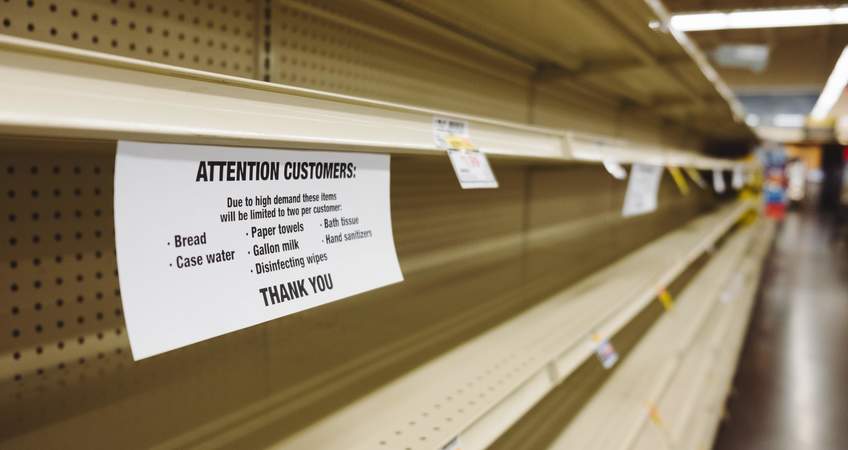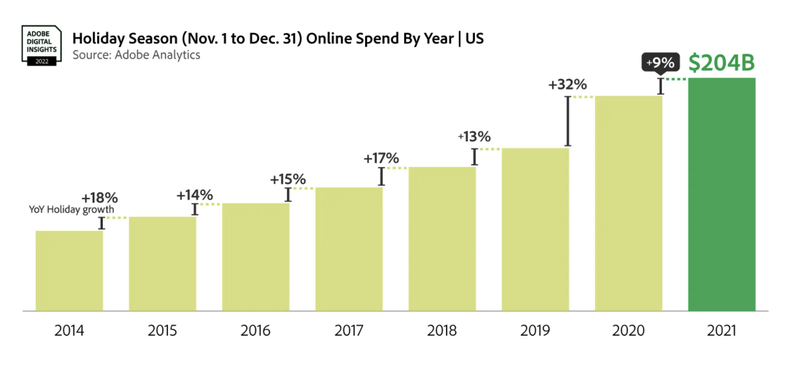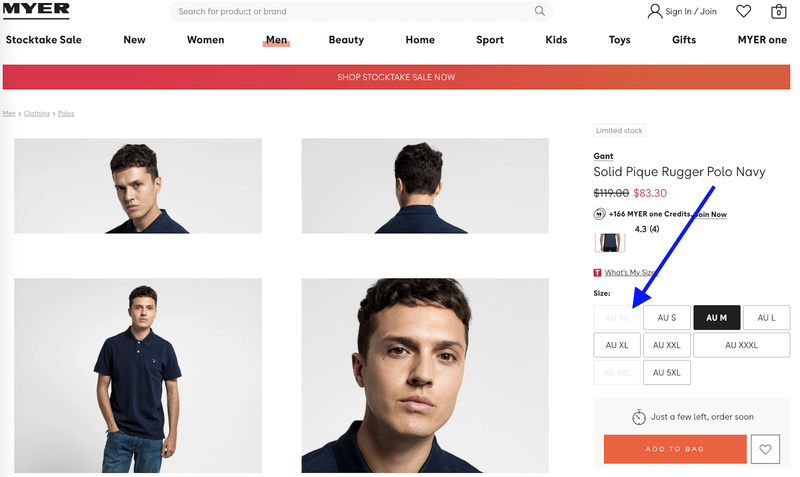
One of the biggest challenges retailers face is trying to drive growth with less inventory. This has been a challenge since COVID began. When looking at the bigger picture, US consumers spent a record $204.5 billion online throughout the 2021 holiday shopping period: November to December 2021. A 9% increase from the previous year.

Figure 1
This increase could have been arguably larger when analyzing the breakdown of sales over this two-month period…
- The early weeks in November (1st to 24th) leading up to Black Friday/Cyber Monday showed a 19% increase
- Sales during the 5-day Black Friday/Cyber Monday period showed a 1.4% decrease from the previous year
- From November 30th to December 31st, sales rose 5.6%
The other statistic worth noting was the 10% increase in “out of stock” messages (compared to last year). This equates to over 6 billion “out of stock” occurrences which is up 253% from 2019 levels.
The Experience Impact of “Out of Stock” Experiences:
When it comes to drilling down on “out of stock” experiences, from the consumer’s perspective, the majority of online experiences are to a low standard.
Having a large range of products being out of stock was not a common issue for most retailers previously, so why bother constructing intuitive and elegant “out of stock” experiences.
In today’s global landscape, this is now an experience retailers need to allow for.
Think about this for a moment…
Retailers consume themselves with designing forward journeys/steps to lead consumers to find a product and checkout. However, out-of-stock experiences require consumers to do one of two things…
- Conduct back steps so as to look at other alternatives
- Engage with product suggestions while remaining on product pages
In order for these experiences to be obvious and intuitive, retailers need to rethink the simplification of back steps and the restructuring of product detail pages as a starting point.
For example, why not change the presentation of content and next steps on product pages once a consumer lands on a product that is no longer in stock (this commonly occurs once a consumer selects a product variant such as size/colour). It’s important to remember, the product page is currently designed to do one thing, sell the featured product and prompt consumers to select the “Add to Cart” button.
"Notify Me" experiences are good when consumers are willing to wait for a product. However, when a consumer is in buying mode, they want a product now.
One example in action is when a consumer reaches a product page where he/she can see the size is out of stock (see Figure 2 below).
Why not present a secondary call to action located around these variations which says something like, "If your size is not in stock see similar products that are in stock in your size".
This type of journey requires planning and new technical logic, but from the consumer's perspective (these are the people retailers are trying to accommodate) this becomes a far more intuitive experience.
And more importantly, this is what happens when consumers are in physical stores finding products. They find a product they like but cannot find their size. What happens next? Employees help the consumer find something similar in his/her size.

Figure 2
Retailers and B2B's have been hit hard by limitations that come with the issues surrounding the supply chain. However, to drive growth with less product requires a complete rethink in how to construct online journeys.
The most important consideration is to have empathy for the "out of stock" experiences commonly occurring and determine what must change to turn a bad experience into an amazing one.
This article was as tagged as